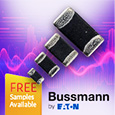Anglia Components
|
||||
|
||||
|
||||
The role of design in the distribution business model by Steve Rawlins
|
The character of the distribution market has undergone some very marked changes in recent years. This is due to a considerable degree to the way component manufacturers have slimmed down their own field applications teams, and have devolved more of the design support activity to their distributors. Consolidation has been taking place at all levels of the supply chain, and recent distribution mergers mean that some manufacturers have sought new distribution channels. |
This has provided an opportunity for forward-looking distributors, particularly those willing to invest in engineering resource, to differentiate their offering and to provide balance by adding value for both customer and supplier.
Among the many changes has been the growing demand for more complex product designs, counter-balanced by the conflicting requirement for faster time-to-market. Product lifespan have also been dramatically reduced. Added to these factors, it is clear that designs now demand expertise in a wider range of disciplines, which may include mixed signal and high frequency, embedded processors, DSP, audio/video and display technology.
As a result of this evolving business landscape, most distributors have bolstered their technical support teams to some extent, but few have made as significant an investment to make design excellence an integral part of their business model as Anglia has.
Earlier this year the company launched a new technical design facility, Anglia Designs, with a £500K investment in equipping a new laboratory and hardware/software design suite, installing CAD/CAM capability and an EMC pre-compliance test facility.
A specialist design team also works within Anglia’s Displays Division, to provide enhanced technical support to its customers with respect to the integration of display systems. Many of today’s colour displays need external controllers, inverters and drivers, in addition to requiring specialist connectors and cables. Another team is focused on optoelectronics, where in-depth knowledge of the LED product ranges is combined with expertise in driver, heatsink and lens technology products to provide the high level of design support that a manufacturer needs to produce a fully working LED lighting product.
Design kits
In addition to supporting customer designs, Anglia Designs also produces its own reference designs and evaluation platforms, such as evaluation boards for STMicroelectronics microcontrollers and a set of complete reference designs for AC-DC switched mode power supplies, based on the Power Integrations range of ICs. The Anglia Design Accelerator Kits (ADAK) have been designed in-house to provide all the essential materials necessary to demonstrate the advanced features of the power chips, and to offer a reference design that can either be used to produce a working power supply or be customised to meet individual requirements.
The range of kits includes designs for both isolated and non-isolated topologies, at power levels up to 30W. They are suitable for customers designing and manufacturing their own power supplies for almost any type of mains-operated equipment. The need for such power supply reference designs is being driven by energy efficiency regulations such as CEC and Energy Star, and by the need to replace expensive 50Hz linear transformer solutions with a more cost-effective option.
Each ADAK kit includes a fully assembled and tested power supply evaluation board and complete documentation, including a product datasheet – giving performance data and typical operating characteristics – and an Engineering Prototype Report (EPR). The EPR details the power supply reference design specification, schematic, bill of materials, transformer documentation, and provides the PCB layout. Further documentation, including Gerber files for the layout, can also be downloaded from the Anglia website.
Technical resources
Over the past couple of years Anglia has grown and developed its technical team into an elite taskforce that offers the best design support available in the distribution sector to customers across its entire product range. The company believes in recruiting engineers with a sound technical background, well-developed communications skills and excellent customer awareness, then continuing to train them to the very highest standard, providing in-house training on a variety of technical and management skills, in addition to making sure that they are fully trained on the product ranges they’re supporting, and that this product knowledge is continually kept up to date by the manufacturers.
The field applications engineers will work with the customer’s design engineers to find the right parts for their design – it is difficult to over-estimate the importance of this aspect of the customer partnership. However the technical support doesn’t end with design-in – Anglia also gets involved in production engineering issues such as solderability, packaging, labelling and so on, and with the QA Department on reliability issues. Other design services include assisting customers to make their designs greener by designing for better energy efficiency. Using its own tools and reference designs, Anglia’s aim is to be able to deliver a fully working prototype to the customer.
There are even several ways in which the engineers can help customers with products that might have been in production for some time: for instance they can investigate the range of components the customer is buying for different projects, and help them to standardise on certain package styles or lead pitches – thus helping to minimise the customer’s own stock inventory and to capitalise on economies of scale.

